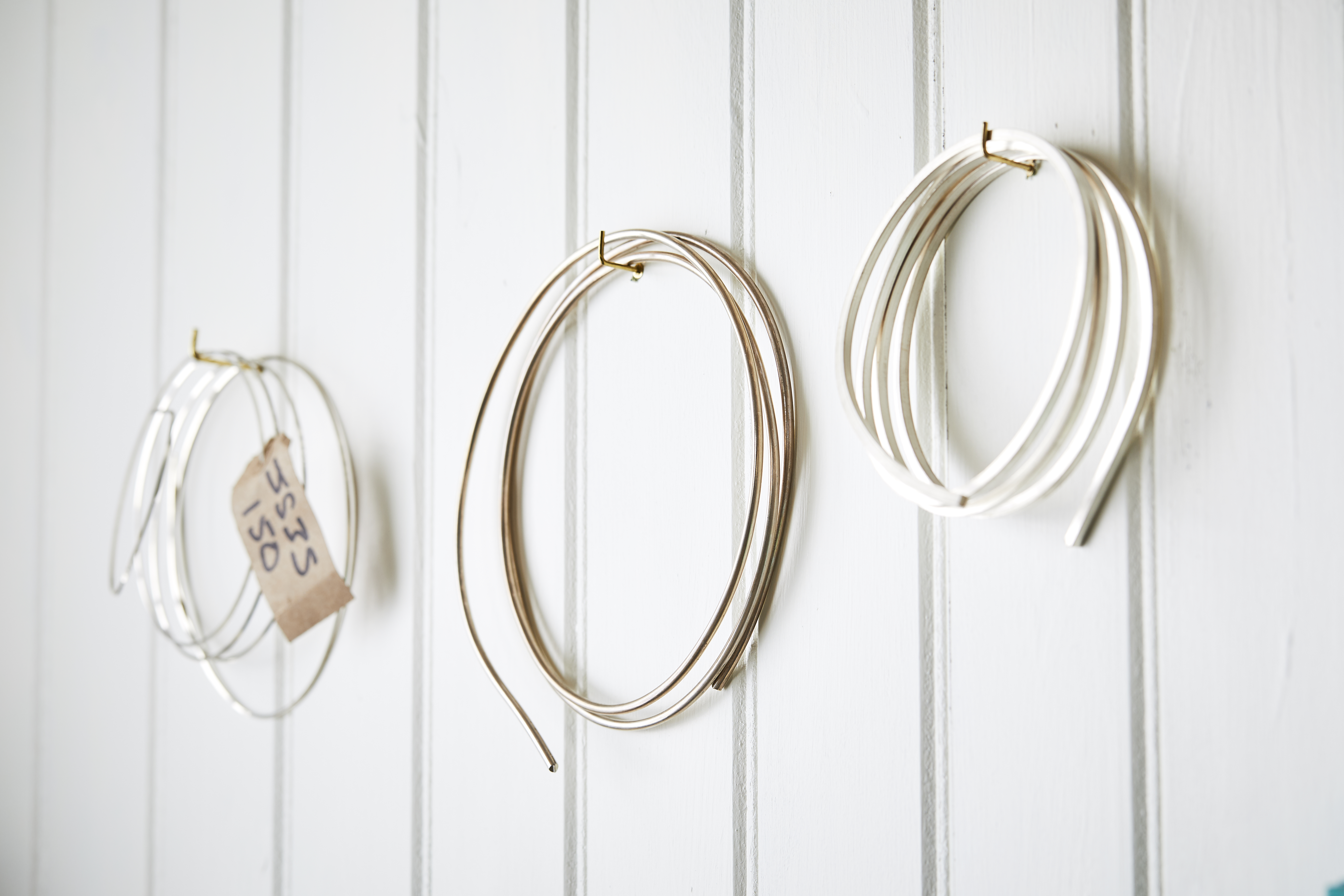Wire Wrapping is a creative and fun activity to learn when you’re looking for a new hobby or wanting to expand your design repertoire. But it can be difficult to know what you need to begin.
On this page, we have compiled a range of tools and materials that are needed to get wire wrapping today.

Wire
Obviously, for a technique called wire wrapping, you are going to need wire!
If it’s your first time wire wrapping jewellery, you might want to start with craft, copper or silver plated wire, as these metals are slightly cheaper and will give you more room to make mistakes and get used to the technique as they are less likely to break.
Once you’ve mastered the technique, you can move onto more premium materials like sterling silver or gold. There are also different sizes of wire that are suited to different designs:
- Smaller wires (0.5mm or less) – perfect for wrapping around beads or gemstones to add more detail.
- Medium wires (around 1mm) – can be used to make findings and create unique shapes used for pendants, earrings and more.
- Medium-thick wires (around 2mm) – are ideal for forming your own rings and bracelets.
- Thicker wires (e.g. 3-4mm) – are harder to work with, but are perfect for bulky, bold designs.


Pliers
Pliers are one of the most important tools for wire wrapping with endless choices. Each plier produces different curves, shapes and effects, however, here are the recommended styles for beginners:
- Round Nose – these pliers have two almost cone line jaws that allow you to smoothly bend wire, make loops, jump rings and more
- Flat nose – these simply have two flat jaws with a hard profile end, simple to use and easy to grip or position wire
- Half round – these have one flat jaw and one half-round jaw – making them ideal for creating rings and shaping wire
- Chain nose pliers – with rounded outsides and flat facing jaws, tapering to a small point making them ideal for wrapping wire and closing jump rings


Cutters
Wire wrapping will involve cutting the wire flush, wire cutters look similar to pliers, but will allow you to cut wire to your exact needs.


Hammers
Jewellers hammers allow you to shape, harden and flatten wire – which makes them one of the most vital wire wrapping supplies (and you can never have too many!) We’ve outlined some of the most popular hammers for wire wrapping below:
- Jewellers hammer - A jewellers hammer is ideal for work-hardening the wire to make it more durable
- Rawhide mallet – used to strengthen your base frame wire and help flatten wire and return it back into shape if you’ve made a mistake
- Repousse hammer - Ideal for adding texture to your metal and wire, as well as flattening it


Mandrels and Triblets
The two most popular tools for creating wire wrapped rings are triblets and mandrels, which can be used to form or re-shape existing rings into different sizes or to correct the shape of designs. What’s more, a bracelet mandrel can help you produce your own bespoke bangles.


Ruler
If you are working on a small, intricate design or need to get an exact measurement for your wire, then you’ll need a ruler or rule. This is a handy piece of equipment to have in your workshop, as you’ll need one for a range of projects, they are available in or plastic.
Files and Emery Paper
Files and sandpaper or emery paper are vital to the wire wrapping process, because cut wire, leaves sharp edges – which aren’t ideal when it comes to wearing jewellery. That’s why you’ll need a selection of files and sandpaper to help smoothen down the sharp corners to make your designs safe to wear.


So, now you have the tools and the wire, what will you be making?
Kate Hunter
